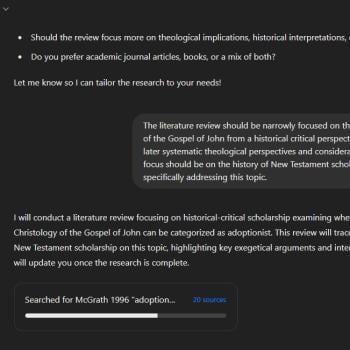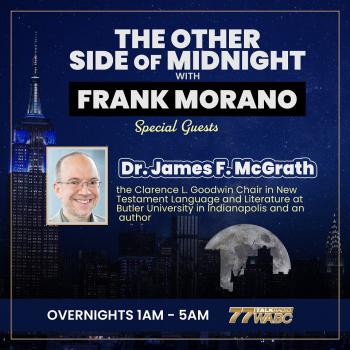I am grateful to Eerdmans for having sent me review copies of two commentaries on the Gospel of John which they recently published. As I am teaching my course on the Gospel of John this semester, I hoped to blog about both commentaries as I encountered points of note or interest. Alas, it has taken me until now to get around to blogging about the introductions!
The two commentaries are those by Urban von Wahlde in the Eerdmans Critical Commentary series, and J. Ramsey Michaels in the New International Commentaries on the New Testament (NICNT) series. Von Wahlde’s commentary spans three volumes, and so the first volume (which is more than 700 pages!), related to introductory matters, is the only one that will be focused on in this post: The Gospel and Letters of John, Volume 1: Introduction, Analysis, and Reference (Eerdmans Critical Commentary). The approach adopted is the classic source-critical one, seeking to discern evidence of different editions of the Gospel, and to relate these to the history of the author and community that produced the work, and to other literature such as the Johannine Epistles. The evidence used to distinguish layers is discussed, such as the tendency to refer to Jewish leaders in terms of specific parties and constituencies, or to lump them together under the heading “the Jews” (pp.63ff). Von Wahlde seeks to avoid shoehorning the evidence to fit such theories, a criticism often leveled against source critics in the past. Instead he recognizes that the tendency to favor certain terminology does not mean that a different author, editor, or source, could not have also used the term on occasion. The theological outlook of the different editions, as pertaining to matters such as faith, is given an interesting treatment.
No matter how much there may today be a preference for literary critical approaches that discuss the meaning of the final form of the text, scholarly readers of this Gospel remain puzzled by the contrasting views of signs and the combination of awkward disjunctions and stylistic commonalities, which seem to cry out for an explanation in terms of sources and redaction or multiple editions. And von Wahlde offers precisely what he needs to in order to provide a source-critical and redaction-critical commentary: a detailed presentation of the outline of the various editions, their theology, and the “identity and social location of the community” at the time the edition was produced (p.116), and the author of that edition. Part 4 of this first volume offers a substantial tracing of the history of the community and its thought as reflected in the history of composition of the Gospel, in essence offering a history of Johannine theology. Part 5 provides the text of the Gospel with different typefaces indicating different redactional layers.
Michaels begins his commentary, The Gospel of John (New International Commentary on the New Testament), by referring to and quoting a poem by Emily Dickenson:
God is a distant — stately Lover —
Woos, as He states us — by His Son —
Verily, a Vicarious Courtship —
“Miles”, and “Priscilla”, were such an One —
But, lest the Soul — like fair “Priscilla”
Choose the Envoy — and spurn the Groom —
Vouches, with hyperbolic archness —
“Miles”, and “John Alden” were Synonym
This relates not only to Longfellow’s “The Courtship of Miles Standish,” but also equally directly to a major theme in the Gospel of John, that the one sent must be received like the one who sent him, and that the Son does nothing of himself. Given the Gospel’s opening prologue, starting with poetry seems particularly appropriate.
Michaels’ introduction to his commentary covers the ground one would expect if familiar with classic commentaries. The question of authorship is tackled, including an intriguing exploration of the possibility that the Gospel could have been written by one of Jesus’ brothers. Relationship to other Gospels, location, date, and other such topics are likewise broached, in a way that takes them seriously and yet acknowledges our inability to provide definitive answers to the key questions.
And so, when it comes to introducing the Gospel of John, these two commentaries provide very different approaches and perspectives. Both are needed – the brief but thoughtful overview that can introduce a student to the major questions, and the detailed exploration of layers and redaction that a scholar interested in such matters must wrestle with.














